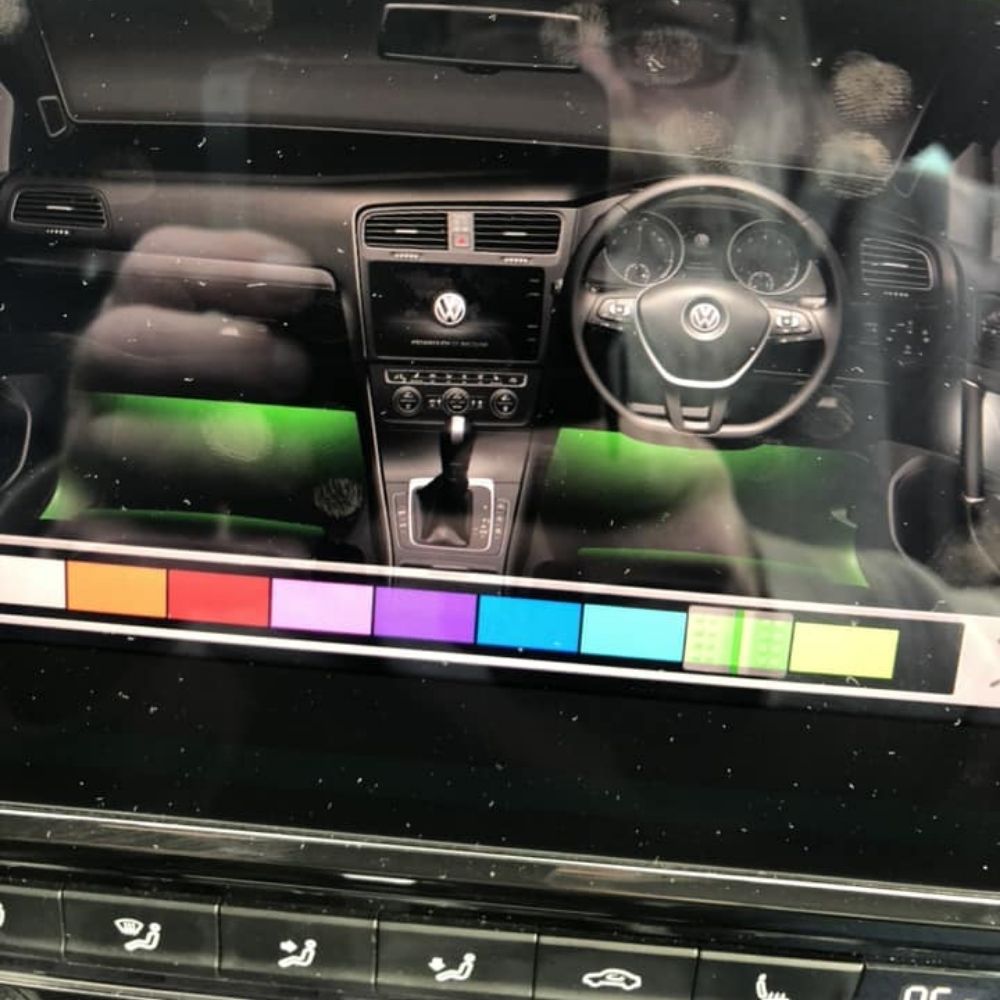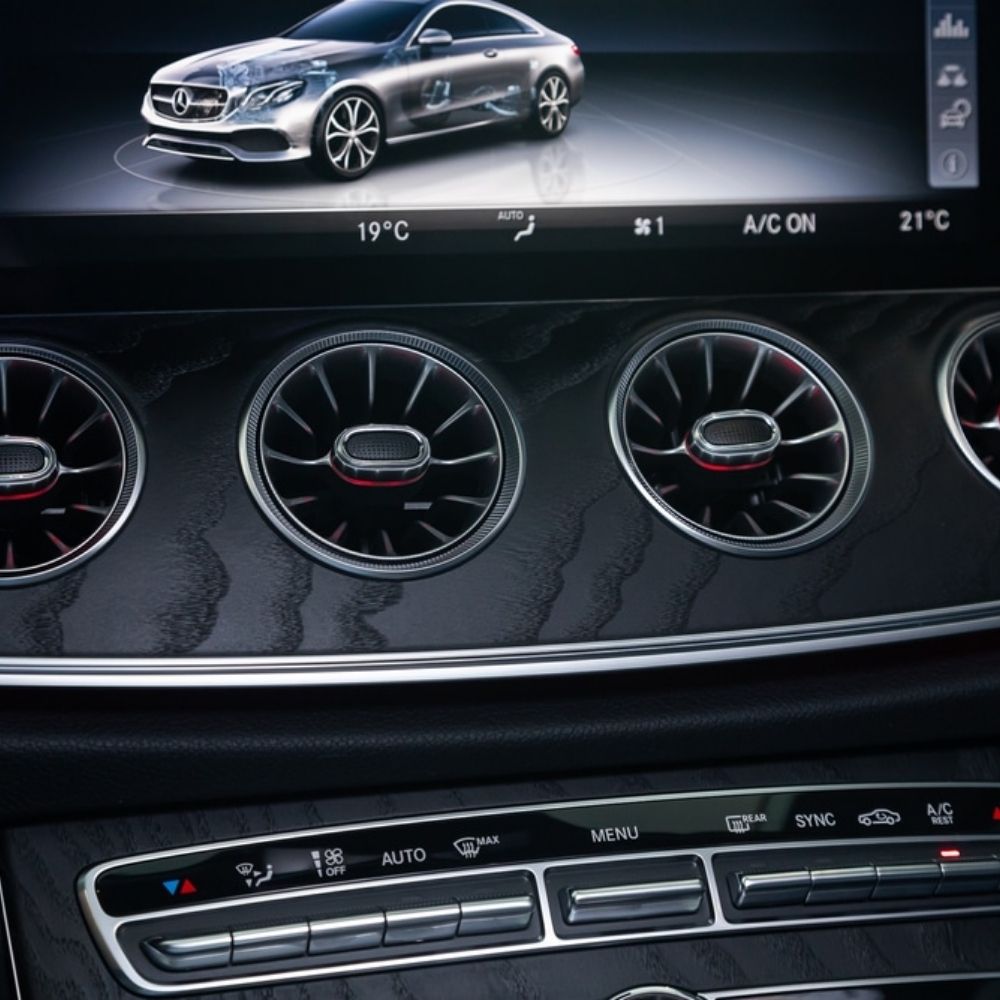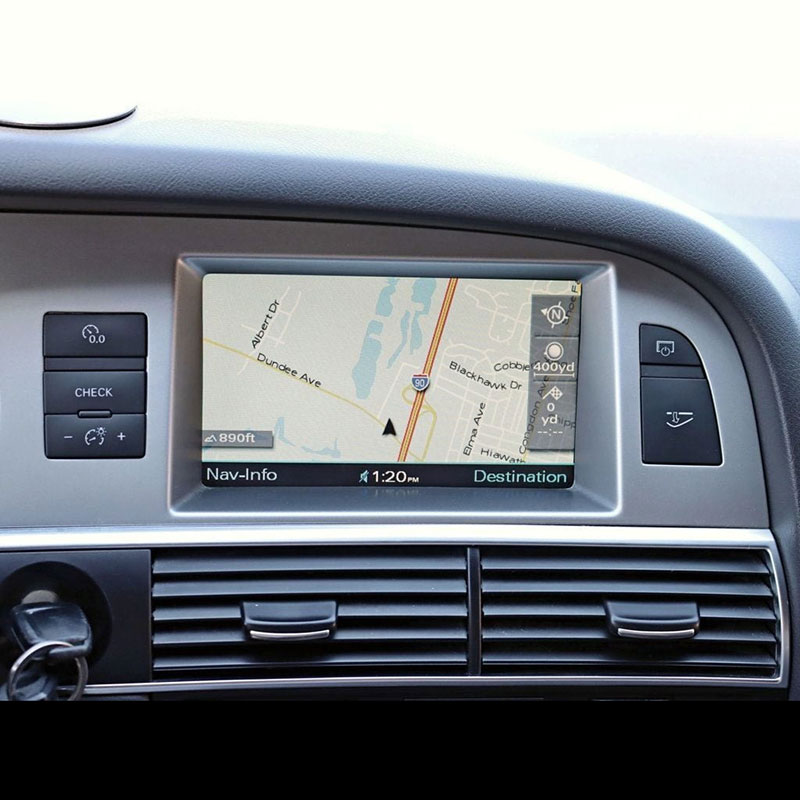
C100 Mercedes Fault Code: Diagnosis And Solutions
Contents
- 1. Understanding the C100 Mercedes Fault Code
- 2. Common Causes of C100 Fault Code
- 2.1. CAN Bus Malfunctions
- 2.2. Module Communication Errors
- 2.3. Power Supply Problems
- 2.4. Software and Programming Errors
- 3. Diagnosing the C100 Mercedes Fault Code
- 3.1. Initial Scan and Code Verification
- 3.2. Visual Inspection
- 3.3. CAN Bus Testing
- 3.4. Module-Specific Tests
- 4. Steps to Fix the C100 Mercedes Fault Code
- 4.1. Repairing Wiring and Connectors
- 4.2. Replacing Faulty Modules
- 4.3. Addressing Power Supply Issues
- 4.4. Software and Programming Updates
- 5. Advanced Troubleshooting Techniques
- 5.1. Using a CAN Bus Analyzer
- 5.2. Oscilloscope Diagnostics
- 5.3. Data Logging
- 6. Preventive Measures to Avoid C100 Fault Code
- 6.1. Regular Maintenance
- 6.2. Proper Installation of Aftermarket Accessories
- 6.3. Protecting Against Environmental Factors
- 7. The Role of AutoExplain.com in Resolving C100 Fault Codes
- 7.1. Expert Diagnostic Assistance
- 7.2. Access to Technical Resources
- 7.3. Remote Programming and Software Updates
- 8. Benefits of Using AutoExplain.com
- 8.1. Time and Cost Savings
- 8.2. Expert Guidance
- 8.3. Increased Confidence
- 9. Real-World Examples of C100 Fault Code Resolution
- 9.1. Example 1: Wiring Harness Damage
- 9.2. Example 2: Faulty ABS Module
- 9.3. Example 3: Software Incompatibility
- 10. When to Seek Professional Assistance
- 10.1. Complex Diagnostic Procedures
- 10.2. Module Programming
- 10.3. Intermittent Issues
- 11. Step-by-Step Guide to Diagnosing C100 Fault Code
- 12. Step-by-Step Guide to Repairing C100 Fault Code
- 13. Common Mistakes to Avoid When Addressing C100 Fault Code
- 13.1. Neglecting Basic Checks
- 13.2. Replacing Modules Without Proper Testing
- 13.3. Ignoring Wiring Issues
- 13.4. Skipping Software Updates
- 14. Tools and Equipment Needed for C100 Fault Code Diagnosis and Repair
- 14.1. OBD-II Scanner or Mercedes-Specific Diagnostic Tool
- 14.2. Multimeter
- 14.3. Oscilloscope
- 14.4. CAN Bus Analyzer
- 14.5. Wiring Diagrams
- 14.6. Programming Tools
- 15. FAQ: C100 Mercedes Fault Code
- 15.1. What does the C100 fault code mean on a Mercedes?
- 15.2. What are the common causes of the C100 code?
- 15.3. Can I fix the C100 code myself?
- 15.4. How do I test the CAN bus?
- 15.5. What tools do I need to diagnose the C100 code?
- 15.6. How much does it cost to fix the C100 code?
- 15.7. How can AutoExplain.com help with the C100 code?
- 15.8. Is it safe to drive with the C100 code?
- 15.9. What happens if I ignore the C100 code?
- 15.10. How often should I check for software updates on my Mercedes?
- 16. Conclusion: Resolving C100 Fault Codes Effectively
The C100 Mercedes Fault Code is a diagnostic trouble code (DTC) indicating a communication issue within the vehicle’s Controller Area Network (CAN) bus system. AutoExplain.com can help you identify the root cause and guide you through the necessary repairs to restore proper communication between the vehicle’s electronic control units (ECUs). Troubleshooting these communication issues requires understanding the CAN bus system, diagnostic procedures, and potential repair strategies.
1. Understanding the C100 Mercedes Fault Code
The C100 Mercedes fault code often relates to communication problems within the vehicle’s network. This network allows various control units, such as the engine control module (ECM), transmission control module (TCM), and anti-lock braking system (ABS), to share information. When a fault occurs in this communication network, it can trigger the C100 code, which requires a systematic diagnostic approach to identify and resolve the underlying issue.
2. Common Causes of C100 Fault Code
The C100 fault code can be triggered by a variety of underlying issues. These issues can range from simple electrical problems to more complex module failures. Accurately identifying the root cause is crucial for effective repair.
2.1. CAN Bus Malfunctions
The Controller Area Network (CAN) bus is a critical communication pathway in modern vehicles. The CAN bus allows various electronic control units (ECUs) to communicate and share data. Problems within the CAN bus system are a frequent cause of the C100 fault code.
- Wiring Issues: Damaged, corroded, or loose wiring can disrupt communication on the CAN bus.
- Short Circuits: Short circuits in the CAN bus wiring can interfere with signal transmission.
- Open Circuits: Open circuits can lead to a complete loss of communication between modules.
- Termination Resistor Problems: Faulty termination resistors can cause signal reflections and communication errors.
2.2. Module Communication Errors
Electronic control units (ECUs) play a pivotal role in managing various vehicle functions. Communication errors involving these modules can trigger the C100 fault code.
- ECM Issues: Problems with the engine control module (ECM) can disrupt communication with other modules.
- TCM Issues: Transmission control module (TCM) malfunctions can lead to network communication problems.
- ABS Module Issues: Anti-lock braking system (ABS) module failures can affect the CAN bus.
- Other Module Issues: Any module responsible for CAN bus communication can cause the C100 code if it malfunctions.
2.3. Power Supply Problems
Consistent and stable power is essential for the proper functioning of electronic control units (ECUs). Power supply problems can lead to communication issues and trigger the C100 fault code.
- Low Voltage: Insufficient voltage can prevent modules from communicating effectively.
- Grounding Issues: Poor grounding can introduce noise and interference into the CAN bus.
- Battery Problems: A weak or failing battery can cause voltage fluctuations and communication errors.
2.4. Software and Programming Errors
Software glitches and programming errors can lead to communication problems within the vehicle’s electronic systems.
- Corrupted Software: Corrupted software in an ECU can cause it to miscommunicate or fail to communicate at all.
- Incompatible Software: Incompatible software versions between different modules can lead to communication errors.
- Programming Errors: Errors during ECU programming can result in communication failures.
3. Diagnosing the C100 Mercedes Fault Code
Diagnosing the C100 Mercedes fault code requires a systematic approach to pinpoint the root cause. This involves using diagnostic tools, performing visual inspections, and testing the CAN bus system.
3.1. Initial Scan and Code Verification
Begin by performing a comprehensive scan of the vehicle’s electronic systems using an OBD-II scanner or Mercedes-specific diagnostic tool.
- Read and Record Codes: Note all diagnostic trouble codes (DTCs) present, including the C100 code and any related codes.
- Clear Codes: Clear the codes and take the vehicle for a test drive to see if the C100 code returns.
- Verify the Fault: Confirm that the C100 code is consistently reproducible before proceeding with further diagnostics.
3.2. Visual Inspection
Conduct a thorough visual inspection of the wiring, connectors, and modules associated with the CAN bus system.
- Wiring Inspection: Check for any signs of damage, corrosion, or fraying in the wiring harness.
- Connector Inspection: Examine connectors for loose connections, corrosion, or damage.
- Module Inspection: Look for physical damage or signs of overheating on the modules.
3.3. CAN Bus Testing
Testing the CAN bus involves using an oscilloscope or CAN bus analyzer to evaluate the signal integrity and communication between modules.
- Check CAN Bus Voltage: Measure the voltage on the CAN high and CAN low wires.
- Signal Integrity: Use an oscilloscope to examine the CAN bus waveform for any abnormalities.
- Termination Resistor Check: Verify the resistance of the termination resistors at each end of the CAN bus.
3.4. Module-Specific Tests
Perform module-specific tests to identify whether any particular module is causing the communication issue.
- ECM Testing: Test the engine control module (ECM) for proper function and communication.
- TCM Testing: Test the transmission control module (TCM) for any faults or communication errors.
- ABS Testing: Test the anti-lock braking system (ABS) module for proper operation and communication.
- Other Module Tests: Depending on the vehicle’s configuration and the presence of related DTCs, test other relevant modules.
4. Steps to Fix the C100 Mercedes Fault Code
Repairing the C100 Mercedes fault code involves addressing the underlying issue that is disrupting communication on the CAN bus. The repair steps will vary depending on the specific cause identified during the diagnostic process.
4.1. Repairing Wiring and Connectors
If damaged or corroded wiring and connectors are identified, they must be repaired or replaced to ensure proper communication.
- Repair Damaged Wiring: Repair any damaged or frayed wiring by splicing in new wire sections and ensuring proper insulation.
- Clean Corroded Connectors: Clean corroded connectors using a specialized electrical contact cleaner.
- Replace Faulty Connectors: Replace any connectors that are severely damaged or corroded.
4.2. Replacing Faulty Modules
If a specific module is found to be faulty, it may need to be replaced to restore proper communication on the CAN bus.
- Identify Faulty Module: Confirm that the module is indeed faulty through thorough testing.
- Obtain Replacement Module: Obtain a new or refurbished module that is compatible with the vehicle.
- Install Replacement Module: Install the new module, ensuring all connections are secure.
- Program Module: Program the new module with the correct software and calibrations, if necessary.
4.3. Addressing Power Supply Issues
Correcting power supply issues involves ensuring that all modules receive stable and adequate voltage.
- Check Battery: Test the battery and replace if it is weak or failing.
- Inspect Ground Connections: Inspect and clean all ground connections to ensure good electrical contact.
- Test Voltage at Modules: Test the voltage at each module to ensure it is within the specified range.
- Repair Wiring: Repair any wiring that is causing voltage drops.
4.4. Software and Programming Updates
Updating or reprogramming the software in the ECUs can resolve communication issues caused by software glitches or incompatibilities.
- Check for Updates: Check for any available software updates for the vehicle’s ECUs.
- Reprogram ECUs: Reprogram the ECUs with the latest software versions using Mercedes-specific programming tools.
- Ensure Compatibility: Ensure that all modules have compatible software versions to prevent communication errors.
5. Advanced Troubleshooting Techniques
In some cases, resolving the C100 fault code may require more advanced troubleshooting techniques. These techniques can help pinpoint intermittent issues or complex communication problems.
5.1. Using a CAN Bus Analyzer
A CAN bus analyzer can provide detailed information about the communication on the CAN bus, including message traffic, errors, and signal timing.
- Monitor CAN Bus Traffic: Use the analyzer to monitor the messages being transmitted on the CAN bus.
- Identify Errors: Identify any errors or anomalies in the CAN bus communication.
- Isolate Problem Areas: Use the analyzer to isolate the areas of the CAN bus where communication problems are occurring.
5.2. Oscilloscope Diagnostics
An oscilloscope can be used to examine the CAN bus waveform and identify signal integrity issues.
- Check Signal Shape: Examine the shape of the CAN bus waveform for any distortions or anomalies.
- Measure Signal Amplitude: Measure the amplitude of the CAN bus signal to ensure it is within the specified range.
- Identify Noise: Identify any noise or interference on the CAN bus signal.
5.3. Data Logging
Data logging involves recording the communication on the CAN bus over a period of time to identify intermittent issues.
- Set Up Data Logger: Set up a data logger to record the CAN bus traffic.
- Drive the Vehicle: Drive the vehicle under various conditions to capture any intermittent communication problems.
- Analyze Data: Analyze the logged data to identify any patterns or anomalies that may be causing the C100 fault code.
6. Preventive Measures to Avoid C100 Fault Code
Taking preventive measures can help avoid communication issues and the C100 fault code. Regular maintenance and care can keep the vehicle’s electronic systems in good working order.
6.1. Regular Maintenance
Regular maintenance can help prevent issues that can lead to the C100 fault code.
- Battery Maintenance: Regularly check and maintain the battery to ensure it is in good condition.
- Wiring Inspection: Periodically inspect the wiring and connectors for any signs of damage or corrosion.
- Software Updates: Keep the vehicle’s software up to date with the latest versions.
6.2. Proper Installation of Aftermarket Accessories
Improper installation of aftermarket accessories can interfere with the CAN bus communication.
- Professional Installation: Have aftermarket accessories installed by a professional who is familiar with the vehicle’s electrical system.
- Avoid CAN Bus Interference: Ensure that aftermarket accessories do not interfere with the CAN bus communication.
- Use Quality Components: Use high-quality components that are compatible with the vehicle’s electrical system.
6.3. Protecting Against Environmental Factors
Environmental factors such as moisture and corrosion can damage the vehicle’s electrical system and lead to communication issues.
- Protect Wiring: Protect wiring from moisture and corrosion by using protective coatings and wraps.
- Keep Connectors Clean: Keep connectors clean and dry to prevent corrosion.
- Avoid Water Damage: Avoid exposing the vehicle to excessive water or moisture.
7. The Role of AutoExplain.com in Resolving C100 Fault Codes
AutoExplain.com offers extensive support and resources to help diagnose and resolve the C100 Mercedes fault code. Their expertise in automotive diagnostics can assist both professional technicians and vehicle owners.
7.1. Expert Diagnostic Assistance
AutoExplain.com provides expert diagnostic assistance to help pinpoint the root cause of the C100 fault code.
- Remote Diagnostics: Remote diagnostic services are available to guide you through the diagnostic process.
- Step-by-Step Guidance: Step-by-step guidance is provided to help you perform the necessary tests and inspections.
- Expert Advice: Expert advice is available to help you interpret diagnostic results and develop a repair plan.
7.2. Access to Technical Resources
AutoExplain.com offers access to a wide range of technical resources, including wiring diagrams, diagnostic procedures, and technical bulletins.
- Wiring Diagrams: Detailed wiring diagrams are available to help you trace the CAN bus circuits and identify any wiring issues.
- Diagnostic Procedures: Comprehensive diagnostic procedures are provided to guide you through the diagnostic process.
- Technical Bulletins: Access to technical bulletins and service information is available to help you stay up-to-date on the latest repair techniques.
7.3. Remote Programming and Software Updates
AutoExplain.com can provide remote programming and software updates to resolve software-related communication issues.
- ECU Programming: Remote ECU programming services are available to update or reprogram the vehicle’s ECUs.
- Software Updates: Access to the latest software updates is provided to ensure compatibility between modules.
- Remote Support: Remote support is available to guide you through the programming process.
8. Benefits of Using AutoExplain.com
Using AutoExplain.com offers numerous benefits for resolving the C100 Mercedes fault code.
8.1. Time and Cost Savings
AutoExplain.com can help save time and money by providing accurate and efficient diagnostic and repair solutions.
- Reduced Diagnostic Time: Expert diagnostic assistance can help reduce the time it takes to diagnose the C100 fault code.
- Avoid Unnecessary Repairs: Accurate diagnostic information can help avoid unnecessary repairs and component replacements.
- Cost-Effective Solutions: Cost-effective repair solutions are provided to help you resolve the issue without breaking the bank.
8.2. Expert Guidance
AutoExplain.com provides expert guidance from experienced automotive technicians and engineers.
- Professional Advice: Professional advice is available to help you navigate the diagnostic and repair process.
- Technical Support: Technical support is provided to answer any questions you may have.
- Experienced Technicians: Access to experienced technicians who are familiar with Mercedes vehicles is provided.
8.3. Increased Confidence
Using AutoExplain.com can increase your confidence in diagnosing and repairing the C100 Mercedes fault code.
- Accurate Information: Accurate and reliable information is provided to help you make informed decisions.
- Step-by-Step Instructions: Step-by-step instructions are provided to guide you through the repair process.
- Support and Assistance: Support and assistance are available to help you overcome any challenges you may encounter.
9. Real-World Examples of C100 Fault Code Resolution
Several real-world examples illustrate how the C100 Mercedes fault code can be diagnosed and resolved effectively.
9.1. Example 1: Wiring Harness Damage
A Mercedes technician encountered a C100 fault code on a C-Class sedan. Upon inspection, they found significant damage to the wiring harness near the engine compartment due to rodent activity. The damaged wires were repaired, and the CAN bus was tested to ensure proper communication. After the repair, the C100 code was cleared, and the system functioned correctly.
9.2. Example 2: Faulty ABS Module
In another instance, a Mercedes owner reported a C100 fault code along with ABS warning lights on their dashboard. Diagnostic tests revealed that the ABS module was failing to communicate with the CAN bus. The ABS module was replaced and programmed, which resolved the communication issue and cleared the C100 fault code.
9.3. Example 3: Software Incompatibility
A Mercedes repair shop faced a C100 fault code after performing an ECU replacement on an S-Class. It was discovered that the replacement ECU had an older software version that was incompatible with the other modules in the vehicle. The ECU was reprogrammed with the latest software, which resolved the communication issue and cleared the C100 code.
10. When to Seek Professional Assistance
While some repairs can be performed by experienced DIYers, certain situations warrant professional assistance.
10.1. Complex Diagnostic Procedures
If the diagnostic procedures require specialized tools or in-depth knowledge of the CAN bus system, it’s best to seek professional help.
10.2. Module Programming
Module programming requires specialized software and equipment. Incorrect programming can cause further damage to the vehicle’s electronic systems.
10.3. Intermittent Issues
Intermittent issues can be difficult to diagnose and may require advanced troubleshooting techniques. Professional technicians have the experience and tools to identify and resolve these issues.
11. Step-by-Step Guide to Diagnosing C100 Fault Code
Here’s a step-by-step guide to help diagnose the C100 fault code:
- Initial Scan:
- Use an OBD-II scanner or Mercedes-specific diagnostic tool to read and record all DTCs.
- Clear the codes and perform a test drive to see if the C100 code returns.
- Visual Inspection:
- Inspect the wiring, connectors, and modules associated with the CAN bus system.
- Look for any signs of damage, corrosion, or loose connections.
- CAN Bus Testing:
- Measure the voltage on the CAN high and CAN low wires.
- Use an oscilloscope to examine the CAN bus waveform for abnormalities.
- Verify the resistance of the termination resistors.
- Module-Specific Tests:
- Test the ECM, TCM, ABS module, and other relevant modules for proper function and communication.
- Use diagnostic tools to perform module-specific tests and read any additional DTCs.
- Advanced Troubleshooting (if necessary):
- Use a CAN bus analyzer to monitor CAN bus traffic and identify errors.
- Perform data logging to capture intermittent communication problems.
12. Step-by-Step Guide to Repairing C100 Fault Code
Here’s a step-by-step guide to help repair the C100 fault code:
- Repair Wiring and Connectors:
- Repair any damaged or frayed wiring by splicing in new wire sections and ensuring proper insulation.
- Clean corroded connectors using a specialized electrical contact cleaner.
- Replace any connectors that are severely damaged or corroded.
- Replace Faulty Modules:
- Confirm that the module is indeed faulty through thorough testing.
- Obtain a new or refurbished module that is compatible with the vehicle.
- Install the new module, ensuring all connections are secure.
- Program the new module with the correct software and calibrations, if necessary.
- Address Power Supply Issues:
- Test the battery and replace if it is weak or failing.
- Inspect and clean all ground connections to ensure good electrical contact.
- Test the voltage at each module to ensure it is within the specified range.
- Repair any wiring that is causing voltage drops.
- Software and Programming Updates:
- Check for any available software updates for the vehicle’s ECUs.
- Reprogram the ECUs with the latest software versions using Mercedes-specific programming tools.
- Ensure that all modules have compatible software versions to prevent communication errors.
- Final Verification:
- Clear all DTCs and perform a test drive to ensure that the C100 fault code does not return.
- Monitor the CAN bus for any further communication issues.
13. Common Mistakes to Avoid When Addressing C100 Fault Code
Avoiding common mistakes can save time and prevent further complications when addressing the C100 fault code.
13.1. Neglecting Basic Checks
Failing to perform basic checks, such as visual inspections and battery testing, can lead to misdiagnosis and unnecessary repairs.
13.2. Replacing Modules Without Proper Testing
Replacing modules without proper testing can be costly and may not resolve the underlying issue. Always perform thorough tests to confirm that a module is indeed faulty before replacing it.
13.3. Ignoring Wiring Issues
Ignoring wiring issues can lead to intermittent communication problems. Always inspect the wiring and connectors for any signs of damage or corrosion.
13.4. Skipping Software Updates
Skipping software updates can lead to compatibility issues between modules. Always check for and install the latest software updates for the vehicle’s ECUs.
14. Tools and Equipment Needed for C100 Fault Code Diagnosis and Repair
Having the right tools and equipment is essential for diagnosing and repairing the C100 fault code effectively.
14.1. OBD-II Scanner or Mercedes-Specific Diagnostic Tool
An OBD-II scanner or Mercedes-specific diagnostic tool is necessary for reading and clearing DTCs.
14.2. Multimeter
A multimeter is used for measuring voltage, resistance, and current in the electrical system.
14.3. Oscilloscope
An oscilloscope is used for examining the CAN bus waveform and identifying signal integrity issues.
14.4. CAN Bus Analyzer
A CAN bus analyzer is used for monitoring CAN bus traffic and identifying errors.
14.5. Wiring Diagrams
Wiring diagrams are essential for tracing the CAN bus circuits and identifying any wiring issues.
14.6. Programming Tools
Programming tools are necessary for updating or reprogramming the vehicle’s ECUs.
15. FAQ: C100 Mercedes Fault Code
15.1. What does the C100 fault code mean on a Mercedes?
The C100 fault code indicates a communication issue within the vehicle’s Controller Area Network (CAN) bus system.
15.2. What are the common causes of the C100 code?
Common causes include wiring issues, faulty modules, power supply problems, and software errors.
15.3. Can I fix the C100 code myself?
Some repairs, such as repairing damaged wiring, can be performed by experienced DIYers. However, complex diagnostic procedures and module programming should be left to professionals.
15.4. How do I test the CAN bus?
You can test the CAN bus using a multimeter to measure voltage and an oscilloscope to examine the waveform.
15.5. What tools do I need to diagnose the C100 code?
You will need an OBD-II scanner, multimeter, oscilloscope, CAN bus analyzer, and wiring diagrams.
15.6. How much does it cost to fix the C100 code?
The cost to fix the C100 code varies depending on the cause of the issue. Simple repairs, such as wiring repairs, may cost a few hundred dollars, while complex repairs, such as module replacements, may cost several thousand dollars.
15.7. How can AutoExplain.com help with the C100 code?
AutoExplain.com offers expert diagnostic assistance, access to technical resources, and remote programming services to help resolve the C100 code.
15.8. Is it safe to drive with the C100 code?
It is generally not recommended to drive with the C100 code, as it indicates a communication issue that can affect various vehicle systems.
15.9. What happens if I ignore the C100 code?
Ignoring the C100 code can lead to further damage to the vehicle’s electronic systems and potentially compromise safety.
15.10. How often should I check for software updates on my Mercedes?
You should check for software updates regularly, especially when experiencing communication issues or other electronic problems.
16. Conclusion: Resolving C100 Fault Codes Effectively
The C100 Mercedes fault code signifies a communication issue within the vehicle’s CAN bus system, often stemming from wiring problems, module failures, power supply faults, or software errors. Accurate diagnosis requires systematic testing, visual inspections, and specialized tools. Repairs range from simple wiring fixes to complex module replacements and software updates. AutoExplain.com offers expert assistance, technical resources, and remote services to efficiently resolve C100 codes, saving time and costs. Regular maintenance and prompt attention to warning signs can prevent communication issues, ensuring the reliable operation of your Mercedes.
For expert assistance in diagnosing and resolving the C100 Mercedes fault code, contact AutoExplain.com today. Reach out via WhatsApp at +1(936)2896695 or email at [email protected]. Visit our office at 4590 Angus Road, New York, United States, or explore our services on our website: AutoExplain.com.


How to Perform 7 Speed DSG Basic Settings with ODIS on Skoda Octavia

How do you fix a Tire Pressure Monitor Inoperative Mercedes









